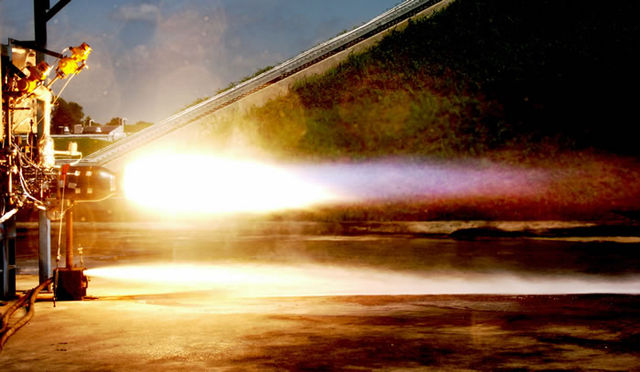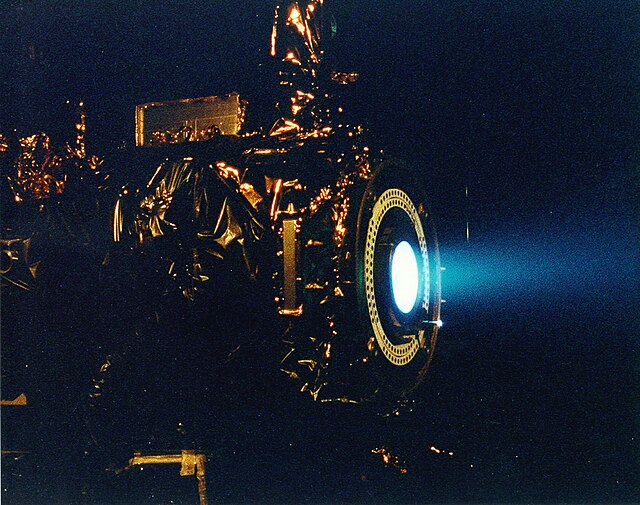Nuclear pulse propulsion or external pulsed plasma propulsion is a hypothetical method of spacecraft propulsion that uses nuclear explosions for thrust. It originated as Project Orion with support from DARPA, after a suggestion by Stanislaw Ulam in 1947. Newer designs using inertial confinement fusion have been the baseline for most later designs, including Project Daedalus and Project Longshot.
Concept graphic of a fusion-driven rocket powered spacecraft arriving at Mars
An artist's conception of the Project Orion "basic" spacecraft, powered by nuclear pulse propulsion.
Spacecraft propulsion is any method used to accelerate spacecraft and artificial satellites. In-space propulsion exclusively deals with propulsion systems used in the vacuum of space and should not be confused with space launch or atmospheric entry.
A remote camera captures a close-up view of an RS-25 during a test firing at the John C. Stennis Space Center in Hancock County, Mississippi.
SpaceX's Kestrel engine is tested.
NASA's 2.3 kW NSTAR ion thruster for the Deep Space 1 spacecraft during a hot fire test at the Jet Propulsion Laboratory
6 kW Hall thruster in operation at the NASA Jet Propulsion Laboratory






